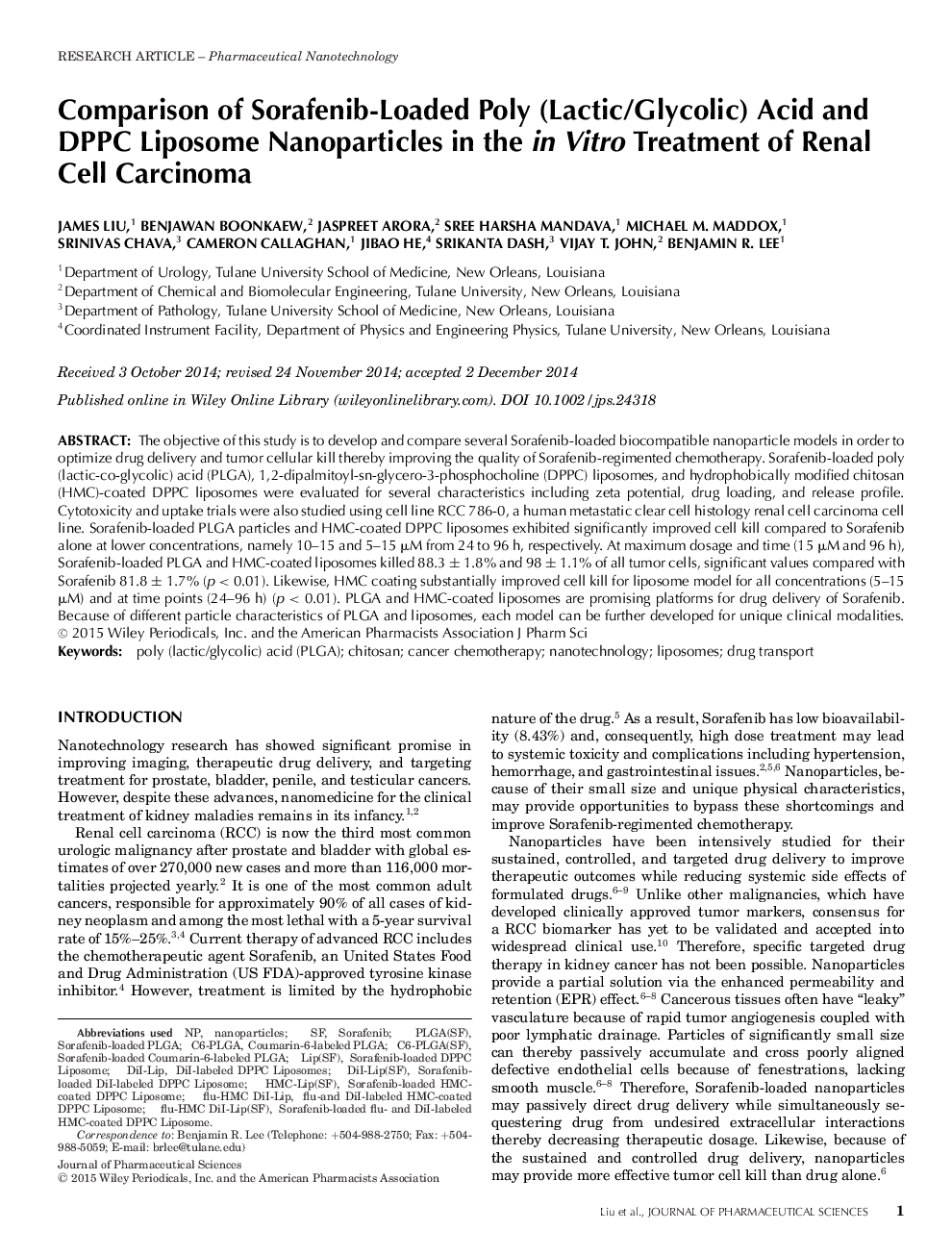| Article ID | Journal | Published Year | Pages | File Type |
|---|---|---|---|---|
| 10162076 | Journal of Pharmaceutical Sciences | 2015 | 10 Pages |
Abstract
The objective of this study is to develop and compare several Sorafenib-loaded biocompatible nanoparticle models in order to optimize drug delivery and tumor cellular kill thereby improving the quality of Sorafenib-regimented chemotherapy. Sorafenib-loaded poly (lactic-co-glycolic) acid (PLGA), 1,2-dipalmitoyl-sn-glycero-3-phosphocholine (DPPC) liposomes, and hydrophobically modified chitosan (HMC)-coated DPPC liposomes were evaluated for several characteristics including zeta potential, drug loading, and release profile. Cytotoxicity and uptake trials were also studied using cell line RCC 786-0, a human metastatic clear cell histology renal cell carcinoma cell line. Sorafenib-loaded PLGA particles and HMC-coated DPPC liposomes exhibited significantly improved cell kill compared to Sorafenib alone at lower concentrations, namely 10-15 and 5-15 μM from 24 to 96 h, respectively. At maximum dosage and time (15 μM and 96 h), Sorafenib-loaded PLGA and HMC-coated liposomes killed 88.3 ± 1.8% and 98 ± 1.1% of all tumor cells, significant values compared with Sorafenib 81.8 ± 1.7% (p < 0.01). Likewise, HMC coating substantially improved cell kill for liposome model for all concentrations (5-15 μM) and at time points (24-96 h) (p < 0.01). PLGA and HMC-coated liposomes are promising platforms for drug delivery of Sorafenib. Because of different particle characteristics of PLGA and liposomes, each model can be further developed for unique clinical modalities. © 2015 Wiley Periodicals, Inc. and the American Pharmacists Association.
Related Topics
Health Sciences
Pharmacology, Toxicology and Pharmaceutical Science
Drug Discovery
Authors
James Liu, Benjawan Boonkaew, Jaspreet Arora, Sree Harsha Mandava, Michael M. Maddox, Srinivas Chava, Cameron Callaghan, Jibao He, Srikanta Dash, Vijay T. John, Benjamin R. Lee,
